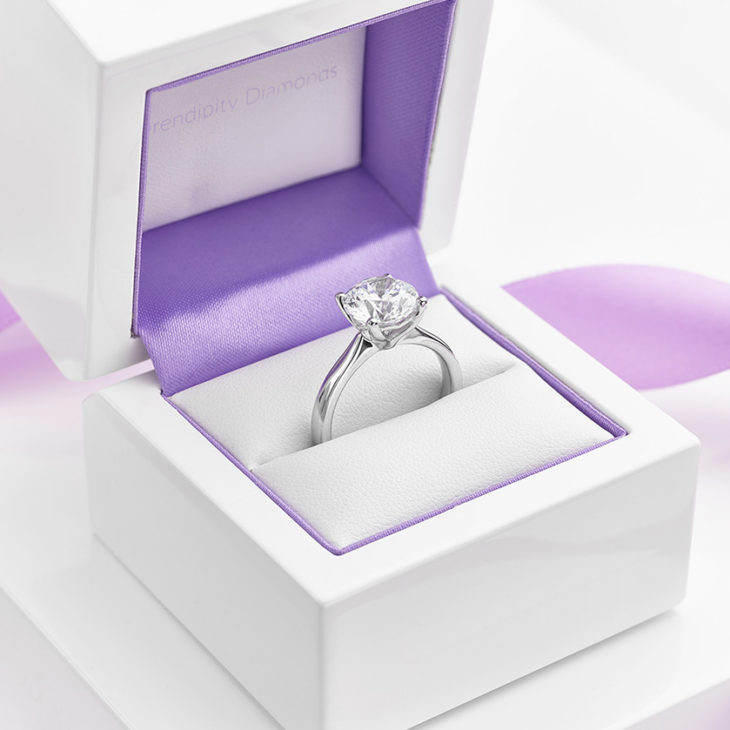What is the highest diamond clarity?
The best diamond clarity available is described as Flawless (FL). Put simply, a Flawless diamond features no internal or external blemishes. Similarly, the Internally Flawless (IF) grade means the diamond has no internal flaws but might have external blemishes.
But flawless diamonds do not represent the best clarity grade for an affordable engagement ring.
What is the best diamond clarity for an affordable engagement ring?
In 2023, buyers face two choices when choosing an affordable engagement ring with decent clarity.
Firstly, natural diamonds graded VS1, VS2, and even SI1 quality provide an eye-clean diamond without the price tag of a Flawless diamond. We recommend GIA-certified diamonds to ensure strict grading and a high standard for the grade.
Alternatively, buyers also have the option to purchase very high purity (Flawless, Internally Flawless or VVS clarity) lab-grown diamonds at a vastly reduced price compared to natural diamonds.
As a result, IF or VVS diamonds can be affordable when purchasing a lab-grown alternative diamond. This includes white and fancy-coloured diamonds grown in a laboratory from very high grade rough diamonds.
What are lab-grown diamonds, and why are they more affordable?
Lab-grown diamonds originate from an advanced technological process, mirroring the natural diamond formation but in controlled environments.
These diamonds, also known as synthetic or cultured diamonds, boast higher clarity grades at more budget-friendly prices compared to their mined counterparts.
The controlled conditions in a lab eliminate the imperfections found in natural diamonds, resulting in stunningly clear gems. Moreover, the ethical and environmental advantages of lab-grown diamonds contribute to their soaring popularity, providing consumers with an appealing alternative that harmonises luxury with conscientious choices.
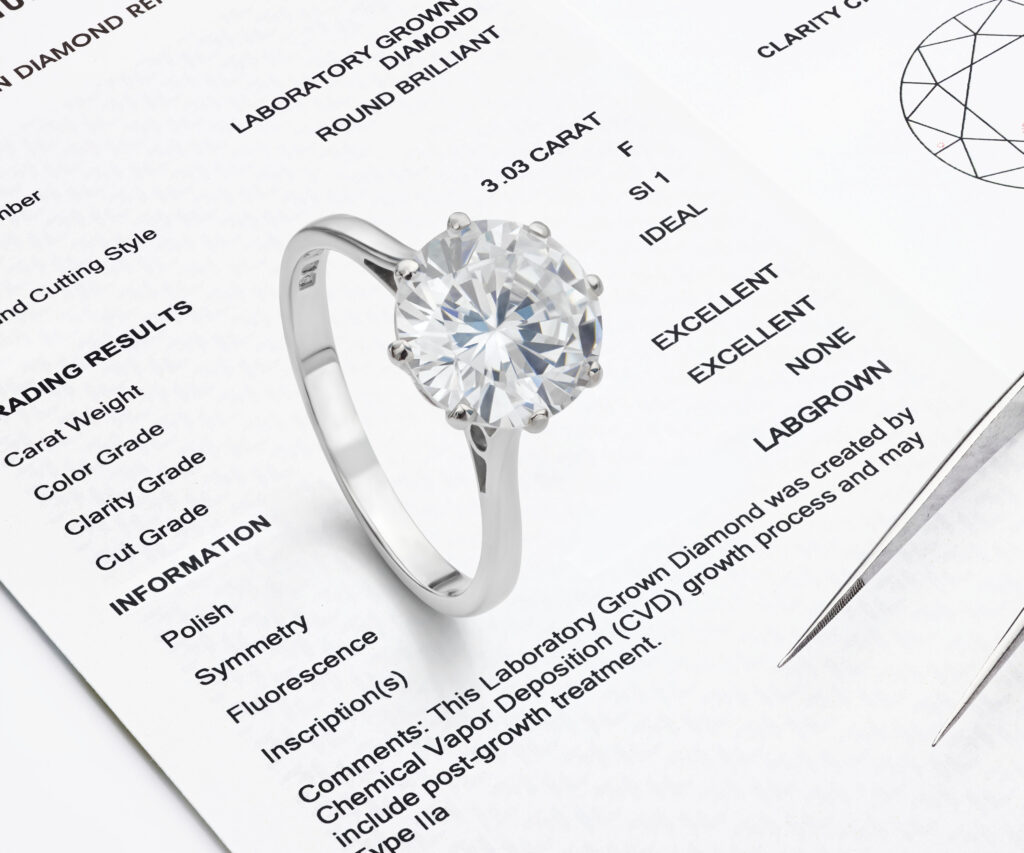
Most of our diamond rings come in a choice of clarity. However, most rings with multiple diamonds are priced in SI1 clarity. Why? SI1 provides a clear unaided eye-clean diamond. In addition, most SI1 diamonds appear clear to the naked eye. Also, known as eye-clean diamonds. Marks present in the stone remain unseen without the use of a lens.
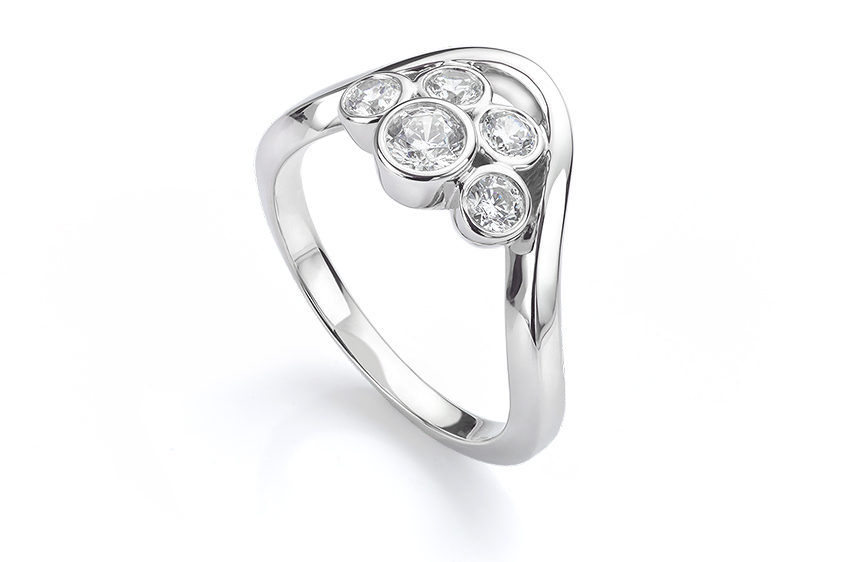
The above diamond bubble engagement ring is created using SI1 clarity diamonds —our standard for eye-clean diamond brilliance.
Defining diamond clarity
Diamond clarity grades give a specific value to express the concentration of natural characteristics present within a diamond.
A few important notes on buying a diamond
There are some important notes to consider when choosing the your diamond clarity for an engagement ring. Although the SI1 clarity level is suitable for many rings, please keep in mind the following.
Why choose GIA certification when it comes to choosing clarity?
Most good quality diamonds above 0.30 carats include a report. Despite a certificate, some labs will grade diamonds better than they are. For this reason, we advise GIA reports (Gemological Institute of America). Their strict grading is well respected. GIA certified SI1 clarity diamonds appear clean to the naked eye. In contrast, some laboratories grade worse diamonds better. See below for an example.
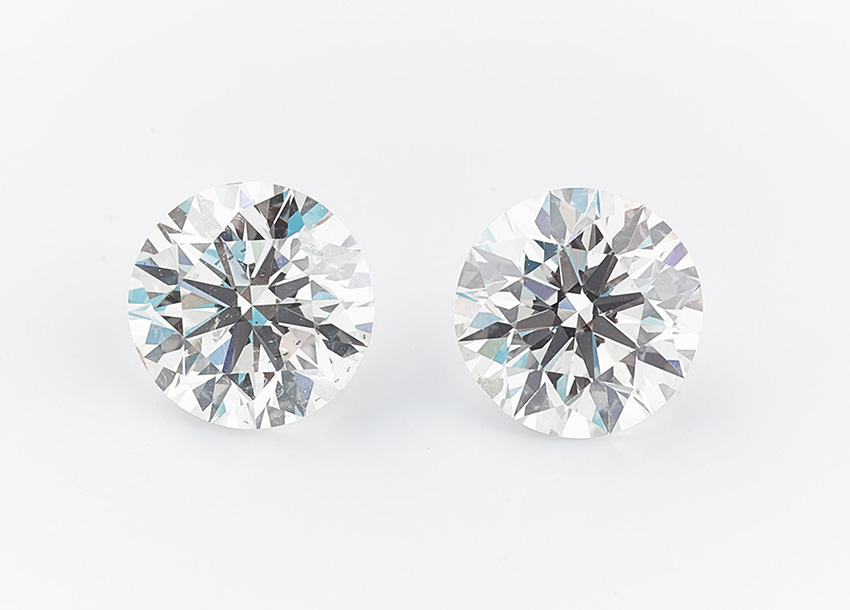
Showing identical clarity grades but graded by IGI (left) and GIA (right)
SI1 Clarity and Emerald Cut Diamonds
Step cut diamonds (Emerald cut, Baguette-cut, Carré cut) show inclusions and blemishes more easily. For Emerald cuts, we advise buying VS1 clarity. For additional reassurance, VVS diamonds offer additional peace of mind. This is important when choosing the best diamond clarity for your engagement ring.
Choosing the best clarity for big diamonds
Diamond inclusions within 1.5 carats and above can be more visible due to the diamond size. A larger diamond will naturally have a larger table facet. Small marks below the table may be more visible to the naked eye. Once you see the diamond inclusions, they can become easier to spot.
Choosing clarity when buying small diamonds
Small marks are less visible in small diamonds. For this reason, a diamond cluster ring will appear bright, and clear even when it has average clarity diamonds. Despite this, reduced brilliance results from the inclusions in each diamond. For this reason, consider the size of diamonds when choosing the perfect diamond clarity for your ring.
How do I know where the inclusions are within the diamond?
Here at Serendipity Diamonds, the offer of detailed photography and microscopy of the Diamond can be supplied upon request if needed to show you any inclusions within your Diamond. This option works particularly well if visiting our showroom is not an option.
How does Diamond Clarity appear on a Certificate?
When buying a diamond it is always a good idea to request to view the diamond certificate. The most respected diamond grading lab as mentioned above is GIA – Gemological Institute of America.
All of the diamond characteristics appear noted onto a diamond certificate. These range from the carat weight of the stone down to the diamond tables measurement.
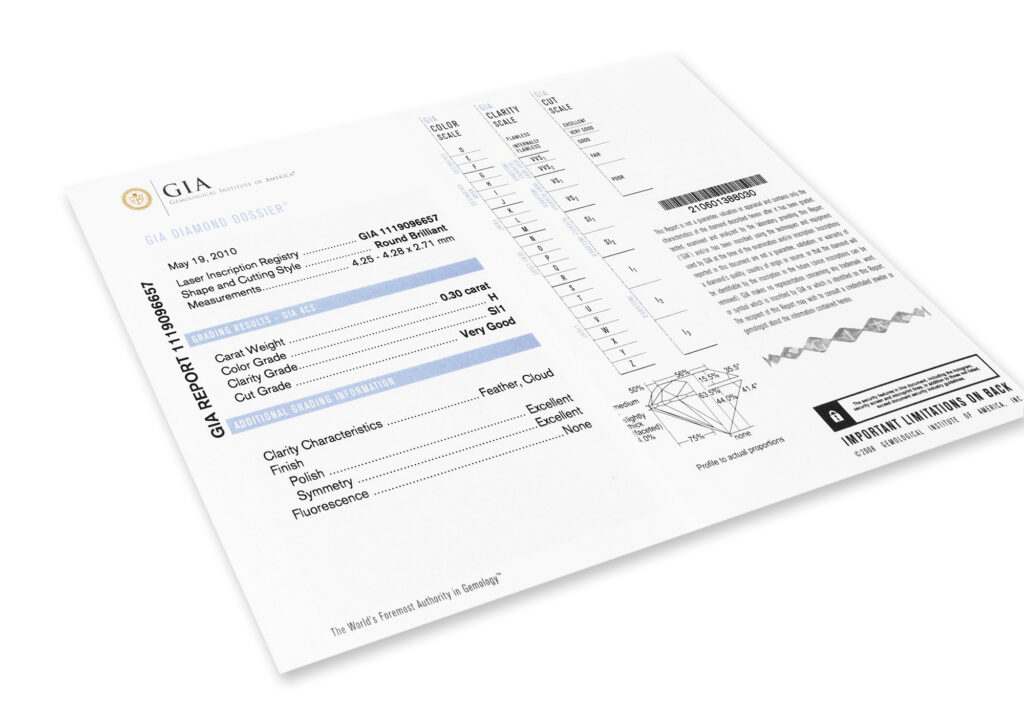
On occasion for larger diamonds, typically 1.00ct and over the certificate will feature a clarity diagram. With markings showing where the diamonds’ inclusions are located.
For diamonds graded at i1 – i2 these will appear particularly included. With inclusions and blemishes visible to the eye.
These characteristics will more than likely include heavy black marks. For this reason, Serendipity doesn’t offer diamonds with a clarity grade under Si2. Unless under special request.
Viewing the diamond under a loupe
Although viewing a diamond on paper can help with finding the perfect stone. Some clients prefer to view the proposed diamond in the flesh prior to making a decision.
Here at Serendipity Diamonds, we arrange appointments to visit our Ryde Showroom. By having a range of diamonds to be available upon arrival they can be viewed under a 10 x jewellers loupe or under our microscope.
Our knowledgeable team can then point out the diamond inclusions.
No two diamonds have the exact same clarity characteristics. Which makes the diamond you select a truly unique diamond.
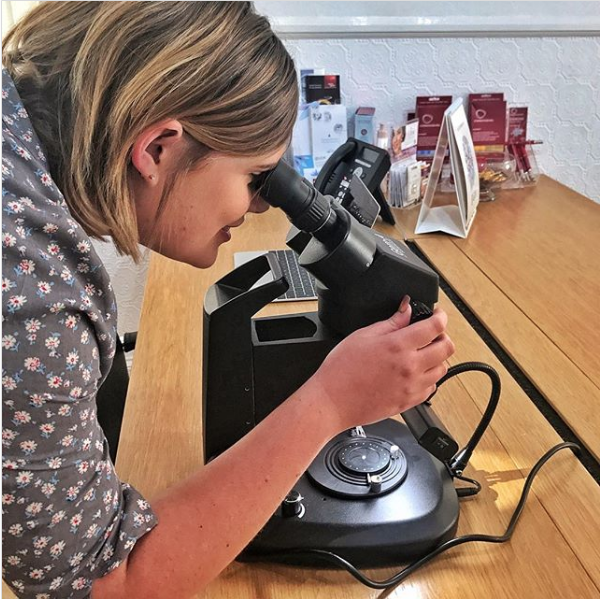
Lab-grown diamonds. Do lab-grown diamonds have inclusions?
We recently added lab-grown diamonds to the many options available at Serendipity. Many buyers experience confusion when it comes to lab-grown diamonds vs natural diamonds. For example, some ask if man-made diamonds have inclusions. The answer is yes! We grade lab-grown diamonds in the same way as natural diamonds. For this, we use the 4 C’s to determine the colour, clarity, carat weight and cut.
Unlike natural diamonds, lab-grown diamonds are created above ground through either of two processes, both covered in another article.
One of the key considerations for many buyers comes from the 40-50% lower price tag compared to natural diamonds. Moreover, no visible difference can be seen between both diamond types.
We source most clarities of lab-grown diamonds for clients. Please contact us for a tailored quote based on any ring design on our website.
About Mark Johnson
My name is Mark and I'm founder at Serendipity Diamonds. By day you'll find me working in our showroom—in a variety of roles. My work (which I love) ranges from photographing jewellery, to writing blog posts and helping clients with my colleagues Drina, Emily and Debbie.



